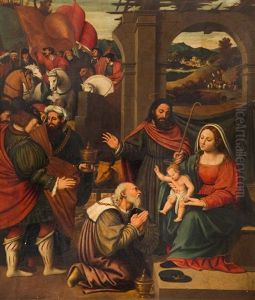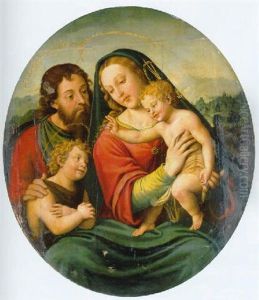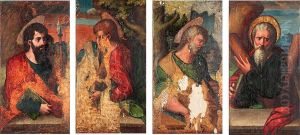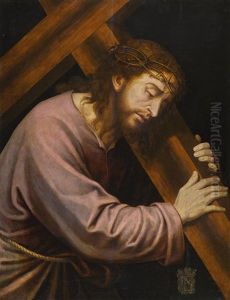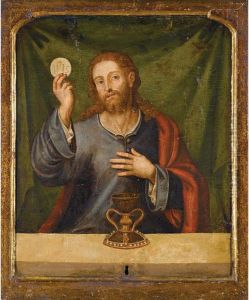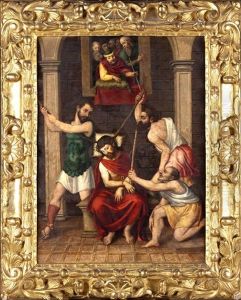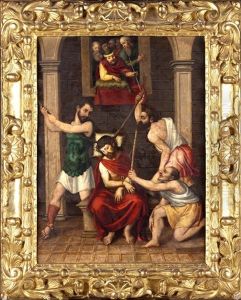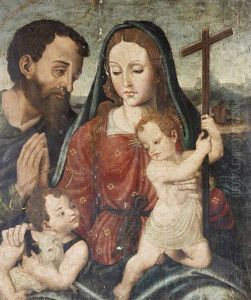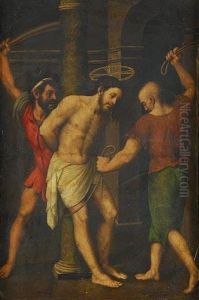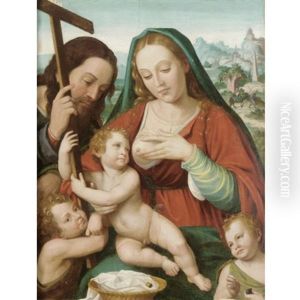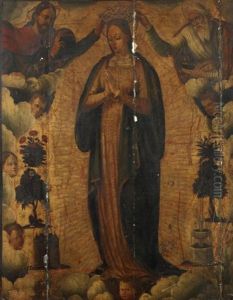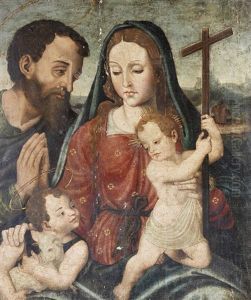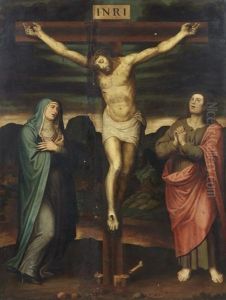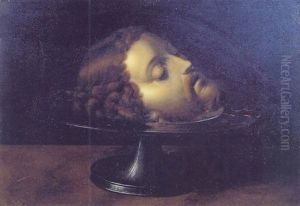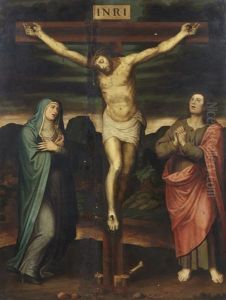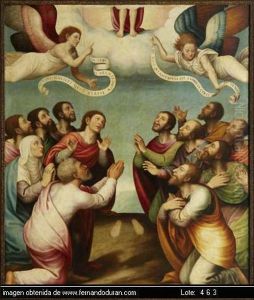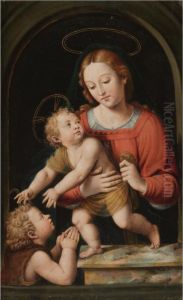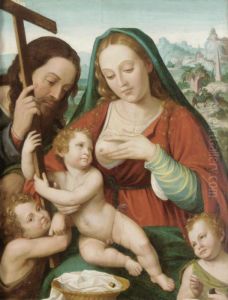Joan De Joanes Paintings
Joan de Joanes, born Vicente Juan Masip, was a Spanish painter of the Renaissance period. He is considered one of the most important Valencian painters of the 16th century. De Joanes was born around 1507 in the town of La Font de la Figuera, which was then part of the Kingdom of Valencia, part of the larger Crown of Aragon. His birth year is not precisely documented, but this approximate date has been inferred from the details of his career and lifespan.
De Joanes initially trained with his father, Vicente Masip, who was also a painter. His work was deeply influenced by the Italian Renaissance, and it is believed that he may have traveled to Italy, specifically Rome, to study the works of Italian masters like Raphael and Leonardo da Vinci, though there is no concrete evidence to confirm this journey. His style, however, does exhibit characteristics of Italian Renaissance art, such as the use of perspective, chiaroscuro, and a sophisticated approach to human anatomy and proportion.
Throughout his career, de Joanes worked primarily on religious subjects, producing altarpieces, devotional images, and frescoes for churches. He became quite successful and was commissioned by various religious institutions across Valencia. His works are noted for their serene and harmonious compositions, as well as their delicate handling of color. One of his most famous works is the altarpiece of St. Stephen for the cathedral in his native Valencia.
Despite his success, little is known about de Joanes's personal life. The details of his training, the extent of his travels, and his private affairs remain largely a mystery. He married and had a son, Vicente Masip Comes, who also became a painter, though he did not achieve the same level of fame as his father.
Joan de Joanes died in 1579 in Bocairente, Valencia. His legacy endured through his influence on later Spanish artists and his contributions to the development of the Valencian school of painting. Today, many of his works are preserved in museums and churches in Spain, and he is celebrated as a prominent figure in Spanish Renaissance art.
